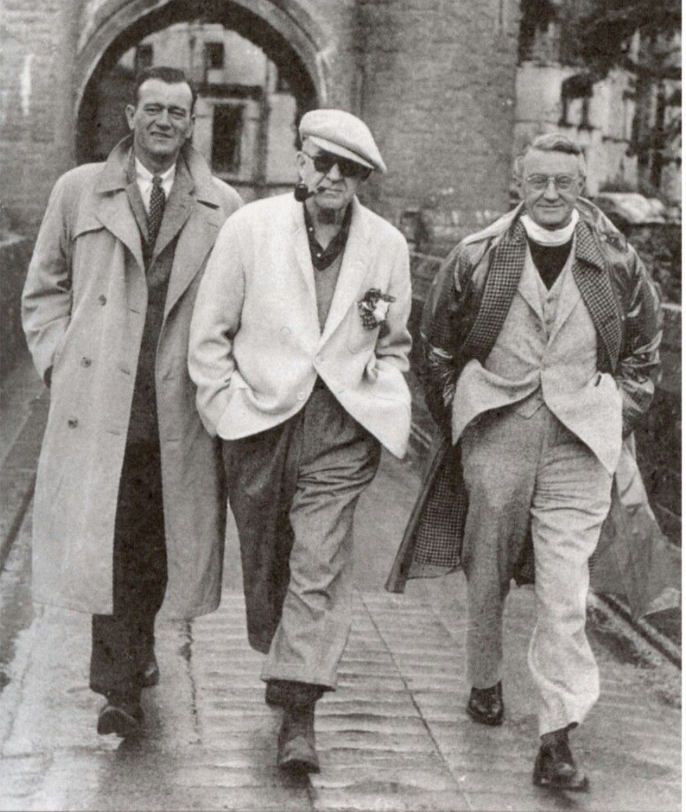Was John Wayne Part of A John Ford Stock Company?
- John Wayne Speaks

- Sep 29, 2021
- 2 min read

Wayne, Ford, and Fitzgerald (l.to r.) during the filming of The Quiet Man.
Brilliant tough-guy director John Ford (1894-1973) was the main creative force behind some of Hollywood’s most revered films: How Green Was My Valley, The Informer, Young Mr. Lincoln, Drums Along the Mohawk, My Darling Clementine, and The Grapes of Wrath, among numerous others. Some of his finest work was in films starring John Wayne: the so-called Cavalry Trilogy (Fort Apache, She Wore A Yellow Ribbon, and Rio Grande), The Quiet Man (among Ford and Wayne’s best-loved films), Stagecoach, The Searchers, and The Man Who Shot Liberty Valance. The last three of those titles are arguably among the finest movies in cinema history. But was Wayne part of what has come to be known as the John Ford Stock Company?
A stock company is often found in theater troupes, whose core group of actors perform in various roles again and again in the theater’s changing repertoire. Actor A may be the heroine in one play, the fifth-billed mother of the star in another, and little more than a bit player in still another. Similarly, Ford had a cadre of performers that he would hire again and again to perform in his films: Maureen O’Hara, James Stewart, and Barry Fitzgerald, each of whom acted in five Ford films; Henry Fonda (eight films); John Carradine (11); Victor McLaglen (12); Ward Bond (24); Harry Carey Sr. (27 films); and the lesser-known Jack Pennick, who tops the list with appearances (many uncredited) in 41 Ford films. With these and other actors, Ford went on to win four Best Director Oscars.
John Wayne should indeed be included in that list, considering he appeared in 22 Ford feature films (add two more to that total if you include Ford’s second-unit work on Hondo and The Alamo) and three TV episodes. That would place Duke in the Top 5 actors in Ford’s revolving troupe of players. Of course, the idea of a director’s “stock company” is a convenient conceit of Hollywood history. There was no such official group, but rather an informal collection of actors, some of whom socialized with Ford and were personal friends (like Wayne), but most of whom never saw the director except on the set.
No matter the ins and outs of the “stock company” story, there’s no question that Ford and Wayne were essential to one another’s careers, arguably producing at least three of the finest films among Hollywood’s essentials, and forming one of the most memorable actor-director teams in the annals of the moving picture.









Comments